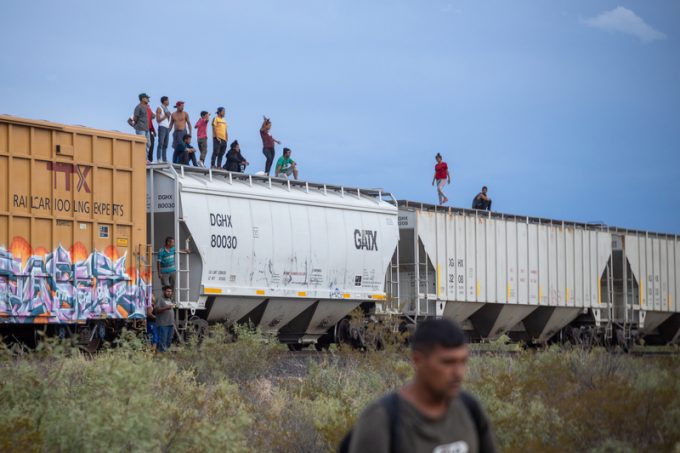Cooling demand increases warehousing vacancies, with rents inching down
Cooling demand has ended the long run of increasing warehousing costs and nudged the average ...

For the second time in four months rail traffic between the US and Mexico has been disrupted by a border closure in Texas.
At 8am yesterday, the US Customs & Border Protection service (CBP) closed three rail crossings at Eagle Pass and El Paso, leaving freight trains on both sides of the border stranded.
The agency shifted personnel that usually deal with cross-border freight traffic to assist with processing an expected surge in the number of people attempting to get into the US at these crossings.
The closure affects the bridge connecting the Mexican town of Piedras Negras with Eagle Pass and two bridges linking Ciudad Juarez with El Paso. The bridges at El Paso are used by Union Pacific (UP) and BNSF, while the Eagle Pass crossing is for UP. Between them, the two US Class I railways run 24 trains a day across the border at these points.
According to UP, the closure has stranded nearly 10,000 rail cars on both sides of the border. It added that, with every day of border closure, it had to embargo bookings on more than 60 trains.
Ian Jefferies, president and CEO of the Association of American Railroads (AAR), warned the closures would have repercussions beyond those two rail companies.
“Ultimately every railroad is affected, since all carriers interchange goods across the North American rail network,” he explained, and urged CBP to end the closures.
“The urgency of reopening these crossings and restoring rail service between the two nations cannot be overstated,” he added. “There are no separate US and Mexican rail networks; there is only one interconnected North American rail network. Every day the border remains closed unleashes a cascade of delay across operations on both sides of the border, impacting customers and, ultimately, consumers.”
UP also called for a quick end of the closures. It said: “These locations handle roughly 45% of the goods critical to the US economy, and there isn’t enough capacity at our other four gateways to reroute them.”
In September, a surge in people crossing Mexico on their way to the US border prompted CBP to shift personnel to immigration and drastically reduce processing of trains and trucks at major entry points, notably Eagle Pass and Laredo. At the same time, Mexican rail company Ferromex suspended 60 routes to the border area after accidents and fatalities involving migrants who had been clinging to its trains on their journey to the US.
Late last month another spike in migration prompted CBP to again shift inspectors to immigration duty and close one of the two road bridges at Eagle Pass to northbound traffic. The congestion at the approach to the bridges snared up trucks heading north for their crossing nearby.
CBP lifted the closure the following day.
Congestion was exacerbated by the Texan Department of Public Safety (DPS) , which mounted safety inspections of trucks entering the US from Mexico. Critics pointed out that these inspections do not allow DPS personnel to open trucks to check for illegal immigrants, and Mexican president Lopez Obrador officially complained about them to the US government.
The problems are a headache for companies that have shifted manufacturing to Mexico to be closer to the US market. So far disruptions have not been dramatic, but they have made reaching US markets slower and more expensive, with companies forced to route shipments to other US entry points further from their destinations.
Down the road, there could be another cross-border rail corridor near Eagle Pass. Green Eagle Railroad (GER), a subsidiary of Texas-based Puerto Verde Holdings, plans to build a rail spur of about 1.3 miles from the border to a UP connection point and a corresponding 18-mile stretch from the Mexican side of the border to a Ferromex railyard. This is part of a plan for a new bridge for rail and road traffic connecting the two countries.
In its submission to the US Department of Transportation, GER points out that Eagle Pass is the second-busiest rail crossing between the two countries, with a single track on the bridge and a number of level crossings in the municipalities of Eagle Pass and Piedras Negras. Its proposed line would have double-track capacity on the northern side and bypass the towns, avoiding level crossings.
Neither GER nor its parent operate any rail lines and it claims the plans have been well received by UP and BNSF. It reckons the corridor could serve 15-18 trains a day.
Whether the CBP would recruit more inspectors to man a new transit point is a different question.
Comment on this article